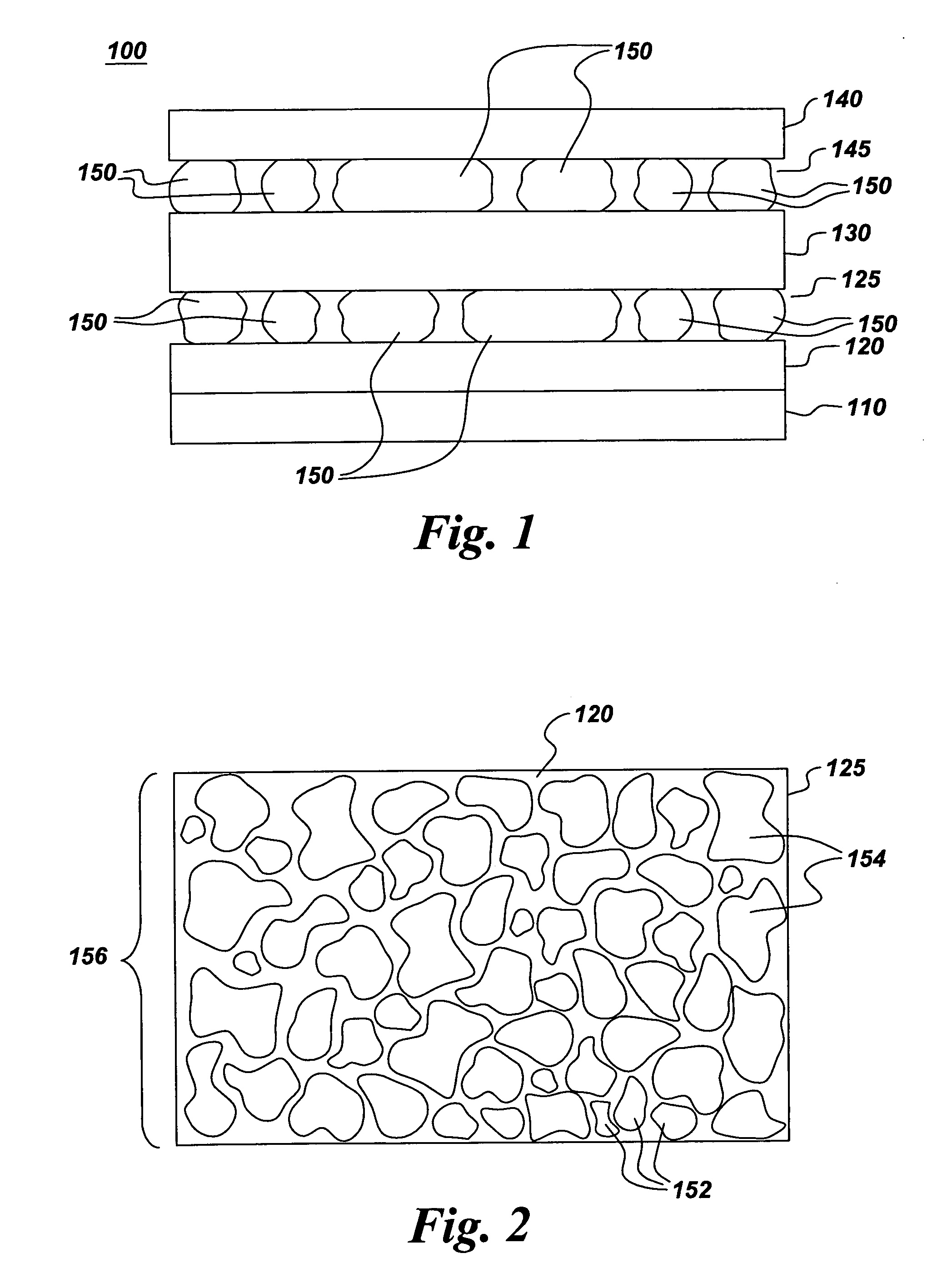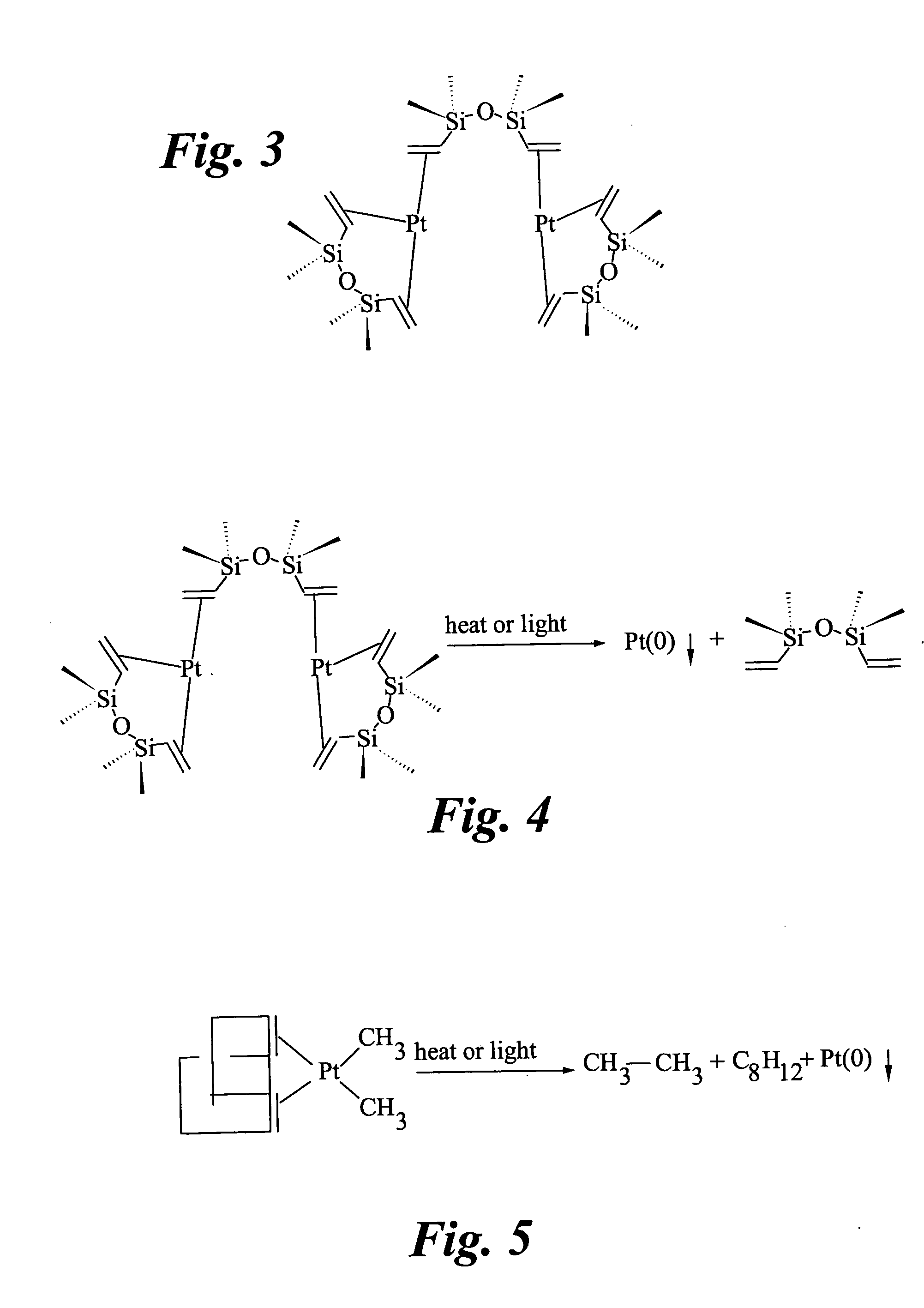Electro-active device having metal-containing layer
- Summary
- Abstract
- Description
- Claims
- Application Information
AI Technical Summary
Benefits of technology
Problems solved by technology
Method used
Image
Examples
example 1
[0045] The initial experiments for low temperature deposition of elemental platinum (Pt(0)) used Karstedt's catalyst solutions. The deposition of elemental platinum using Karstedt's catalyst proceeds according to the reaction shown in FIG. 4. The decomposition temperature was greater than 100° C., and in most instances was about 150° C. Xylene solutions of Karstedt's catalyst were spin coated onto a substrate and then heated to about 150° C. It was later found that better adhesion was obtained when HMDZ (hexamethyldisilazane) was used as a diluent. Cyclic voltammetry (CV) analyses of the Karstedt's catalyst-derived films were consistent with the presence of elemental Pt(0) on the surface of the substrate.
[0046] In some instances, films made using Karstedt's catalyst, produced films that were clear but brown in color. Other Pt precursors having volatile ligands were used to obtain ‘clean’—i.e., substantially residue-free—decomposition to Pt. The precursor dimethyl(1,5-cyclooctadiene...
example 2
[0047] The possible performance of a Pt-containing layer of the present invention in an electro-active device such as a photovoltaic (PV) cell may be correlated with Kelvin probe measurements. The Kelvin probe gives a CPD (contact potential difference) value, which is directly related to the work function of a sample. Thus, a change in CPD value between samples is directly related to a corresponding change in work function; if a standard is known, then the absolute work function of an unknown sample can be determined.
[0048] Platinum-containing layers of the present invention were deposited on two combinations of electrode materials and substrates: tin oxide (SnO) deposited on glass; and indium tin oxide (ITO) deposited on Lexan® (polycarbonate). The CPD values obtained for SnO deposited on glass and ITO on Lexan® were −0.385 V and −0.503 V, respectively.
[0049] The structures of the Pt organometallic complexes that were used to deposit Pt on the electrode / substrate combinations are...
PUM
| Property | Measurement | Unit |
|---|---|---|
| Temperature | aaaaa | aaaaa |
| Temperature | aaaaa | aaaaa |
| Temperature | aaaaa | aaaaa |
Abstract
Description
Claims
Application Information
 Login to view more
Login to view more - R&D Engineer
- R&D Manager
- IP Professional
- Industry Leading Data Capabilities
- Powerful AI technology
- Patent DNA Extraction
Browse by: Latest US Patents, China's latest patents, Technical Efficacy Thesaurus, Application Domain, Technology Topic.
© 2024 PatSnap. All rights reserved.Legal|Privacy policy|Modern Slavery Act Transparency Statement|Sitemap



